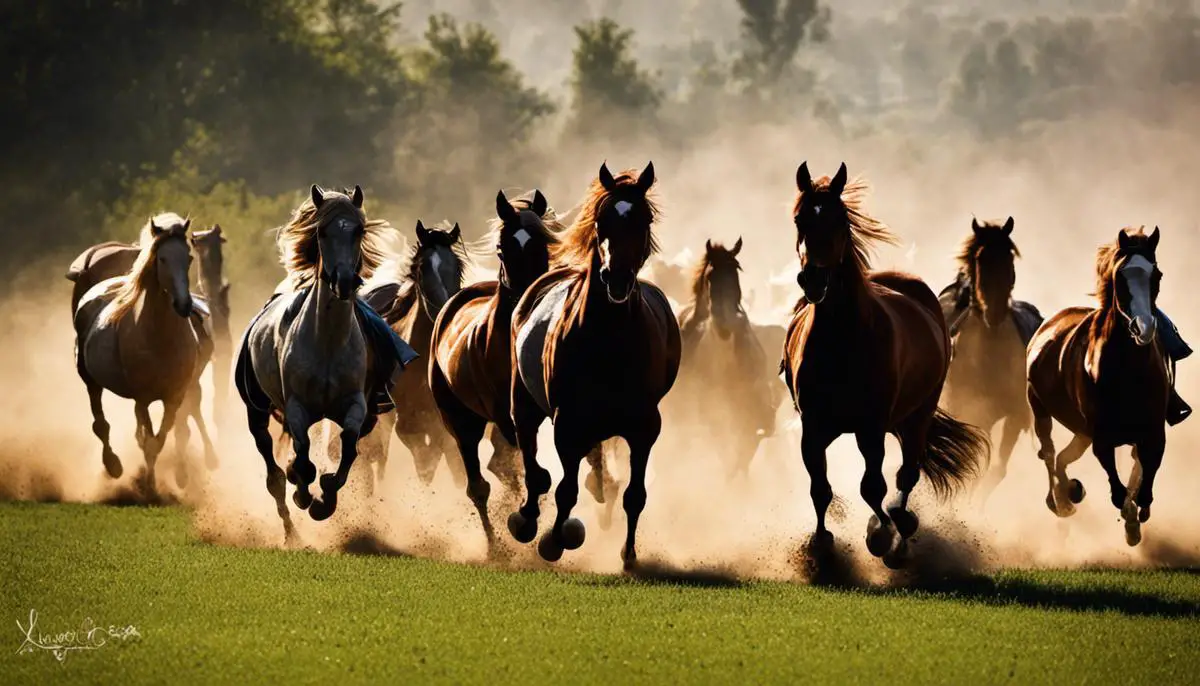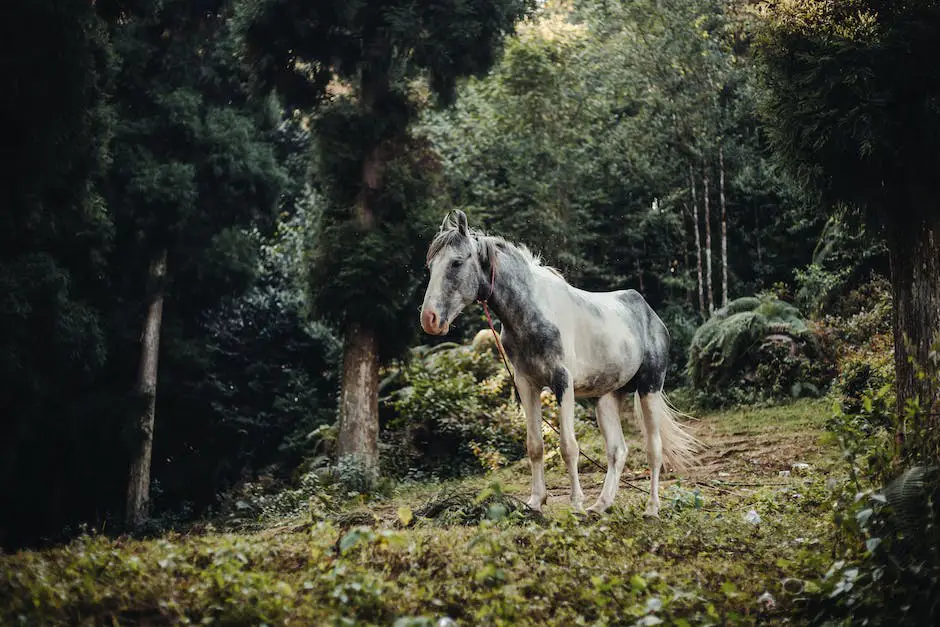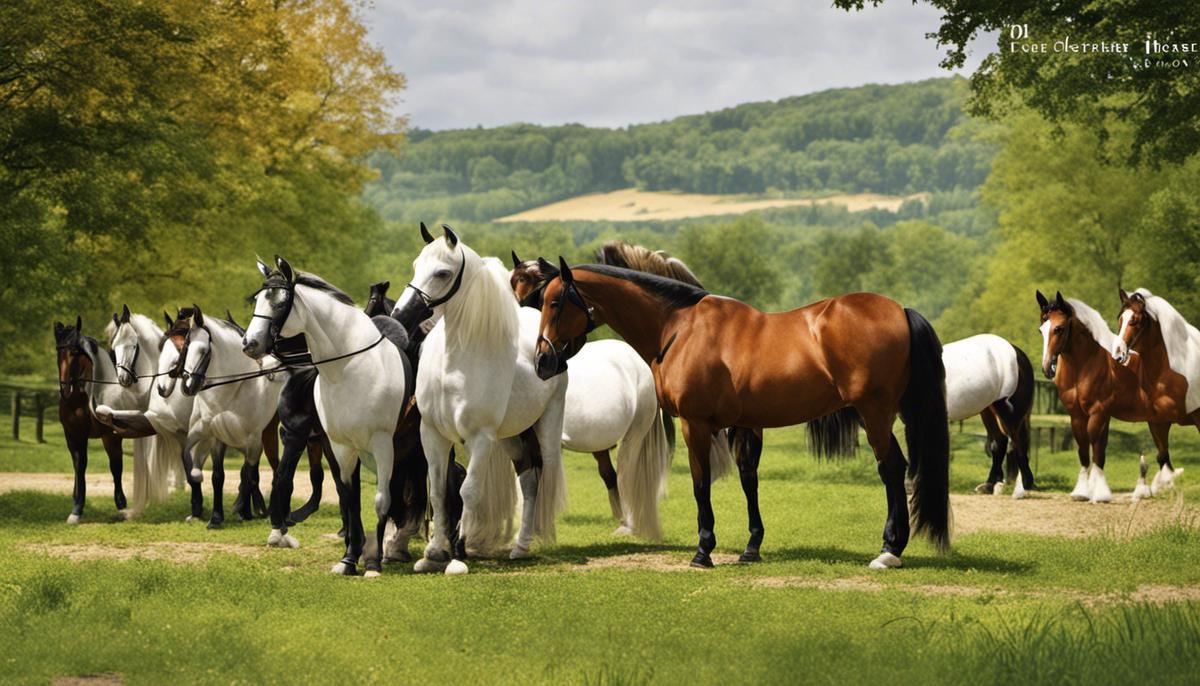Revered for their power and elegance, horses have a vital role in human society. Nowhere is this connection more inherent than in Hungary, a nation distinguished by its globally influential horse breeds. Through the centuries, Hungarian horse breeds have been intimately linked with the socio-economic development and cultural fabric of the nation. This investigation explores this symbiotic relationship, delving into the history, unique characteristics, and cultural significance of the prominent Hungarian horse breeds, offering a profound understanding of their impact and relevance in today’s society.
Table of Contents (Horspedia)
History of Hungarian Horse Breeds
Historic Timeline of Hungarian Horse Breeds
The history of Hungarian horse breeds traces back as far as 3000 BC to the Magyar people, who are believed to have brought the ancestors of these horses from their homelands in the Ural Mountains. During the Middle Ages, around the 9th century, these horses gained significant recognition for their strength and stamina, often used by Hungarian warriors in their conquests.
In the 15th century, various Hungarian horse breeds were selectively bred for different purposes. The Nonius breed, named after a French stallion, was developed for agricultural and military use. The Furioso-North Star breed was created in the 18th century from English Thoroughbred and native Hungarian stock and became a major contributor to modern Hungarian horse breeding.
By the 19th century, the Shagya Arabian, renowned for its endurance, strength, and versatility, was homegrown on Hungarian soil. This breed greatly influenced the Hungarian Warmblood, a sport horse breed known for its competitive success in show jumping, dressage, and driving.
Historically, the Hungarian breeds played a significant role in influencing the development of many European horse breeds. For example, the Lipizzaner, famous as a classic dressage breed, partially owes its origins to the Hungarian horse.
Hungarian Horse Breeds: Influence and Characteristics
Hungarian horse breeds are particularly noted for their distinctive attributes, largely conditioned by the country’s diverse terrain and climatic conditions. These breeds possess great stamina, resilience, and versatility for various equestrian tasks – be it racing, farming, or warfare. These distinguishing traits have marked them out as invaluable to horse breeders across the world.
One historic milestone was the establishment of the Hungarian National Stud in the early 20th century. It furthered the preservation and promotion of the nation’s horse breeds, ensuring their genetic integrity while enhancing performance qualities.
Modern Recognition of Hungarian Horse Breeds
In our contemporary times, Hungarian horse breeds have garnered worldwide recognition for their notable performances in a variety of equestrian events. Their strength and versatility can largely be attributed to their ancient lineage and selective breeding practices.
Take the Hungarian Warmblood for instance, it constantly secures high positions in the World Breeding Federation for Sport Horses (WBFSH) rankings. This is a testament to how competitive they are compared to other sport horse breeds globally. And let’s not forget the Nonius horse that was on the brink of extinction during the Second World War but has since returned to prominence through concerted preservation efforts.
The narrative of Hungarian horse breeds highlights their pivotal part in moulding the global horse breeding industry. The immense journey, from their establishment by the ancient Magyars to their present-day status as esteemed equestrian performers, is a testament to the significant impact Hungarian horse breeds have made. Therefore, due to their development for varying purposes, influence on other European breeds, and their ongoing preservation and promotion, they continue to leave a mark on the equestrian world. These horses, born from the perfect combination of ancient lineage, selective breeding, and national heritage, hold a revered position in equestrian history.

Characteristics of Hungarian Horse Breeds
Diversity Among Hungarian Horse Breeds
The community of horse lovers often regards Hungary for its impressive, historically rich breed of horses, a lineage that spans over a thousand years. The Nonius, Furioso-North Star, Gidran, and Hungarian Warmblood are the four primary Hungarian breeds. Each of these breeds boasts of unique traits and characteristics that set them apart.
Nonius – The Hardy Working Breed
Originating from a French Arabian stallion named Nonius, this breed is famous for its sturdy built, making it a go-to choice for heavy-duty tasks. Nonius horses have a significant head showing a Roman nose, standing at approximately 15 to 16 hands tall with a strong muscular neck, body, and legs. Despite their heavy-built look, they’re admired for their quiet and easy-to-handle temperament. Their patient and cooperative nature has historically been perfect for agricultural work and pulling carriages but today they also star in various equestrian competitions.
Furioso-North Star – The Elite Athletes
Named after two imported English thoroughbred stallions, Furioso and North Star, this breed is built for speed and endurance. These slender yet strong-bodied horses stand between 16 and 17 hands tall, showcasing a beautiful blend of strength and grace. They possess remarkable jumping and racing abilities, accompanied by an eager and competitive temperament, making them a popular choice for both racing and competitive show jumping.
Gidran – A Touch of Oriental Origins
The Gidran breed, or the Hungarian-Arab as it is often called, incorporates the Arabic horse’s grace and endurance into the robust and sturdy Hungarian breeds. Gidrans usually stand between 15 and 16 hands tall and have a light, graceful build with noticeably Arabic features such as the prominent curved neck and high tail carriage. Best known for their speed, agility, and resilience, Gidrans have been used in various equestrian disciplines, especially endurance racing. They boast a balanced and calm temperament, making them well-suited to novice riders too.
Hungarian Warmblood – The Allrounder
A blend of various horse breeds, including the Hungarian native breeds with Thoroughbreds and Warmbloods, resulted in the Hungarian Warmblood. These horses have a medium build, usually standing between 16 and 17 hands tall. Their compact size and powerful physique make them incredibly versatile – they excel in various equestrian sports, including dressage, show jumping, and eventing. Hungarian Warmbloods have a cooperative and eager-to-please temperament, which goes hand-in-hand with their athletic abilities, making them the perfect partners, both in sport and leisure riding.
Hungarian horse breeds are revered for their diverse traits and characteristics. Qualities such as rapidity, resilience, distinct physical features, and personality define these breeds. Their adaptability makes them suitable for various uses, encompassing activities like racing, farming, leisurely horseback riding, as well as competitive equestrian sports.

Significance of Hungarian Horse Breeds in Hungarian Culture
The Historical Importance of Hungarian Horse Breeds
The rich history and culture of Hungary is interwoven with their millennium-long association with various horse breeds. The early Magyar tribes first set the cornerstone for horse breeding, with these noble animals serving as integral parts of warfare, transportation, and symbols of stature. As a result of this enduring historical bond, Hungary has fostered the growth of numerous horse breeds, each celebrated for their unique attributes and characteristics.
Notable Hungarian Horse Breeds
- The Nonius breed:
- The Hungarian Hippo breed:
- The Hungarian Coldblood breed:
- The Magyar Gidran breed:
The Nonius breed was indispensable during the two World Wars, used for hauling heavy artillery and transporting soldiers.
Information about this breed would go here.
Information about this breed would go here.
Information about this breed would go here.
Cultural Importance of Hungarian Horses
Hungarian horse breeds are not just significant for historical reasons. They remain a vibrant part of traditional celebrations and events, serving as a symbol of national pride and heritage. One of the most notable among these is the National Gallop, a traditional horse racing event that showcases the equestrian skills and audacity of the riders, mainly using the Hungarian Warmblood breed. Similarly, the annual horse archery competition harks back to the archery skills of the early Magyar horsemen.
Moreover, Hungarian horse breeds are the focal point of customary “puszta five” shows, where skilled horsemen demonstrate their mastery of riding five horses at once. The image of horsemen galloping across the plains with a team of horses is considered emblematic of Hungarian culture, reflecting the strength, agility, and spirit of the Hungarian people.
Horse breeding traditions are also an integral part of rural tourism in Hungary. The Hortobágy, through its designation as a UNESCO World Heritage site, invites visitors from around the world to explore the rich equestrian heritage of Hungary.
Contemporary Significance: Economic and Cultural
Presently, Hungarian horse breeds still hold a vital economic role, contributing to the agricultural and tourism sectors. They are not just significant within the borders of Hungary, but also highly sought after internationally. With high competitiveness in various types of equestrian sports, Hungarian breeds, such as the versatile Hungarian Warmblood, contribute to the international equestrian sports and horse trade. These horses are prized for their adaptability and athleticism, appealing to a broad range of equestrian enthusiasts.
On a cultural level, the significance of these horse breeds extends beyond equestrian sports and tourism. They also serve as cultural ambassadors, embodying the resilience and invincible spirit of the Hungarian people. For many Hungarians, these horses represent a direct, living link to the revolutionary spirit of their ancestors – reminding them of both the hardships endured and victories won. This ongoing relationship between Hungarians and their horses continues to shape, preserve, and contribute to their collective cultural identity.

Culminating from centuries of selective breeding and vast historical influences, Hungarian horse breeds serve as intricate strands woven into the fabric of Hungary’s national tapestry. They are not only symbols of the nation’s unyielding spirit and heritage, but also integral contributors to its socio-economic progress. Today, these breeds, with their distinguished characteristics and unique traits, continue to inspire equestrians worldwide, embodying the timeless bond between humans and equines. Their ongoing evolution and cultural relevance serve as a testament to the enduring legacy of Hungary’s equine heritage.
